ASD is it linked to silver RM Horses or all silver breeds?
Forums
Re: ASD is it linked to silver RM Horses or all silver breeds?
I've seen many silver stock horses and ponies with silver over the years in Australia, and none had eye problems. I own a homozygous silver shetland with normal eyes. Heaps of silvers in the gypsy horses with no ASD, and many have been checked since they were in the US. So if ASD can link to silver it's certainly not all the time. I think the horse or breed has to have ASD before it can possibly link to silver. If that makes sense. Thus with no known eye problems I quite confidently breed silvers, including silver to silver. :)
Re: ASD is it linked to silver RM Horses or all silver breeds?
Dr. David Ramsey, who did the massive Michigan state study that defined ASD, declares it is present in all breeds who carry silver. ASD Syndrome is a collection of developmental conditions associated with the anterior segment of the eye; however, only one of the multiple conditions possible will affect vision - a subluxated lens. Dr. Ramsey stated that only 5% of the RMH population is homozygous for ASD, and of those only about 30 of them have problems with vision; only 2 were blind (that he stated). Statistically, there is a 25% probability of breeding a homozygous ASD horse when breeding 2 silvers together. There should be a 10% chance of one of them having a subluxated lens, leaving an overall chance of 2.5% with a vision problem.
The RMH is the only breed that has been extensively studied for ASD, and it is probably the only breed so heavily inbred as a population with the silver allele. So it is not unusual, considering the relative rarity of the condition, and the fact that most heterozygous carriers go completely unnoticed without an extensive opthalmic exam, that is has not been truly noticed in other breeds.
Bottom line - don't breed two silvers together if you want to avoid having an homozygous ASD horse with inherited eye abnormalities that may or may not affect the horse's vision.
Re: ASD is it linked to silver RM Horses or all silver breeds?
This paper will probably answer a lot of your questions:
http://www.biomedcentral.com/1471-2156/…" onclick="window.open(this.href);return false;
It is actually not widely believed that all silver horses carry ASD. The Icelandic horse, which has a great deal of silver, has never had a documented case. While research is still ongoing, it is most likely that some silver horse, who was a founder of the RMH and perhaps had influence on other breeds as well, was also a carrier of ASD and spread it, along with the color, through breeds that show silver. But that does not mean that all silver horses will have ASD. However, as the paper states, the mutation for ASD is not yet known, and we only know that it maps to the same region as silver...so they could, in fact, be the same mutation.
is this the most recent info
is this the most recent info on this problem , id it a problem in homzygous minis ?
1http://www.doaj.org/doaj?func=abstract&…
As far as I know personally
As far as I know personally that's the most recent published research. At this point it is safe to say that all horses with the silver mutation are capable of expressing MCOA/ASD.
Even if the silver mutation itself isn't causing the eye issues, but instead a very close linked gene, this research proves that the MCOA/ASD mutation is so old that all silver horse breeds have it.
That would probably be the
That would probably be the most recent considering the publication date is 26 May 2011. Thanks for posting it. I wasn't aware of it.
After reading through the article I would say there is a very high probability that MCOA would be a problem for ANY breed where silver is present.
Just a few highlights I found interesting.
[quote]The PMEL17, exon 11, mutation has been detected in an ancient sample recovered from South Siberia. Radiocarbon dating of this sample revealed that the Silver phenotype was present as early as 800 years BC [3]. It is still unclear if the MCOA locus and Silver locus are two separate but closely linked loci, or if only one mutation is present with pleiotropic effects, influencing both coat color dilution and ocular development [4].[/quote]
[quote]In this study we have shown that the MCOA syndrome is segregating with the PMEL17 mutation in the Icelandic Horse population. This makes the hypothesis that the MCOA mutation has recently arisen unlikely. [/quote]
[quote]We could not detect any clinical signs of MCOA syndrome in three PMEL17 heterozygous horses. This has also been reported in previous studies [4,5]. To date, we do not know if this was caused by limitations in our detection method or if it was due to non- penetrance of the mutation. However, horses without detectable cysts, that carry the PMEL17 mutation, still produce affected offspring [5].[/quote]
[quote]MCOA and PMEL17 are tightly linked, so breeding PMEL17 mutation carriers only to known non-carriers would practically eliminate the risk of producing horses with vision threatening abnormalities caused by this syndrome.[/quote]
From
From http://www.horse-genetics.com/silver-da…
Anterior segment dysgenesis is a genetic eye defect of the horse. Affected horses may have a variety of abnormalities of the eyes, including lesions and cysts, with defects in the iris, cornea, lens, and eyelids (Ramsey et al, 1999, Ewart et al, 2000). They do not respond normally to light, but affected horses don’t usually seem to have significantly impaired vision. Vets had noticed that anterior segment dysgenesis is more common in horses with the silver dapple gene than it is in other horses.
Ewart et al (2000) performed a study to determine wether anterior segment dysgenesis was inherited (Ewart et al., 2000). They studied the eye phenotypes and pedigree information from 516 horses in an extended Rocky Mountain Horse family. They found that anterior segment dysgenesis was inherited in a codominant manner in these horses. They concluded that it was being caused by a single gene, with cysts expressed in heterozygous horses and complex lesions expressed in the homozygous horses. Only in homozoygous horses was the disorder potentially a problem. Such horses should be bred to non Taffys to avoid passing the condition on to their foals. Nonpenetrance of the cyst phenotype appeared to occur in a small number of heterozygotes, and was associated with a particular lineage (i.e. not all heterozygotes showed eye abnormalities).
It would appear that either the silver gene can cause eye abnormalities (i.e. it has pleiotropic affects), or that (in some Rocky Mountain Horses) it is tightly linked to another gene that causes them. Horses with the palest manes and tails were most affected, possibly indicating that homozygous horses are also more diluted in color than heterozygous ones. Anterior segment dysgenesis does occassionally occur in horses of other colors. This might well mean that the gene for it is separate from the silver dapple gene (but closely linked to it). However it is also possible that another gene is involved in these cases.
We now know that there are probably two or more causative silver mutations in the Pmel17 gene. It is possible that one or other of these, or another mutation in the same gene, is associated with ASD.
References
Brunberg E, Andersson L, Cothran G, Sandberg K, Mikko S and Lindgren G. 2006. A missense mutation in PMEL17 is associated with the Silver coat color in the horse. BMC Genetics 7:46.
Ramsey DT, Ewart SL, Render JA, Cook CS, and Latimer CA. 1999. Anterior megalopthalmos and megalocornea of Rocky Mountain Horses. Vet Opthalmol 2, 47-59.
Reissmann, M. Bierwolf, J. and Brockmann, G. A. 2007. Two SNPs in the SILV gene are associated with silver coat colour in ponies. Animal Genetics 38: 1-6.
Ewart SL, Ramsey DT, Xu J-F, and Meyers DA. 2000. The horse homologue of congenital aniridia conforms to semidominant inheritance. Journal of Heredity 91, 93-98.
Be careful googling
Be careful googling it...there seems to be a ton of "not-quite-understood" information out there on websites (including one that says that ASD is another gene that is linked to eye problems, like the one that links Lp to uveitis...not the actual CSNB that has been linked)
This link looks promising:
This link looks promising: http://www.wcrmhc.com/page9.html
Scroll down to Question #13: http://www.aaep.org/ask_the_vet_questio…
Here's a link to the full
Here's a link to the full text NZ
http://www.biomedcentral.com/1746-6148/…
As your stallion is already several years old it is most likely that he shows minimal symptoms. You could have his vision tested if your worried about it.
I feel that, especially in light of this article, it will eventually be proven that the silver coloration and MCOA are caused by the same mutation. As the mentioned article stated If you breed you stallion to non-silvers you will
[quote]practically eliminate the risk of producing horses with vision threatening abnormalities caused by this syndrome[/quote]
Homozygous silver cause
Homozygous silver cause congenital conditions, meaning they are born with them as the condition causes problems during development of the eye as an embryo. You will most likely be able to detect any problems when they are young. Only a small percentage of the ocular anomalies that occur with homozygous silver actually cause vision deficits most homozygous silvers have no obvious problems.
Im not worried at all about
Im not worried at all about his sight , he is nine years this year and his eyes look to be a normal shape ( no bulging )and as far as I can tell he has good vision , Im more concerned about his foals , I have a mare that he has bred that is reg as red pinto well Ive just found out that her dam ..who is visually the exact same colour has been tested as silver bay and so its possible that she is too )Ill post her in a separate thread) I also have a another silver black mare that I have bred ( I didnt know about this problem at time of covering) so I have at least two mares due to foal that could be homozygous , I also have the worry of covering chestnut mares that could carry silver too
supaspot60 wrote:I had my
[quote=supaspot60]I had my miniature stallion tested just before christmas and he came back as homozygous for silver , should I be worried about this problem and should I be getting him tested for anything ?[/quote]
I have a homozygous silver stallion as well, his eyes are basically normal. Well I assume he'd have the cysts, but there is no obvious abnormalities. Of his het silver foals, some of them have fractionaly more poppy looking eyes than others, I wonder if they are the ones with more cysts? I don't like the cysts but I think it's certainly a given they are associated with silver, so I can live with them. The further abnormalities that have been found worry me, I'm not sure it would totally stop me breeding silver to silver with horses that have eyes that basically look normal. I don't know, I would certainly think about it more now anyway. It's good they are doing futher studies and it would be great if it proves one day that it's possible to breed for less severe problems. The extreme abnormalities in the homo silvers still seem very rare, I wonder what makes them so severe at times, and at others no different to the het silvers..
NZ Appaloosas wrote:Scroll
[quote=NZ Appaloosas]Scroll down to Question #13: http://www.aaep.org/ask_the_vet_questio…]
That was interesting, I wonder how old that answer is?
[quote]Your question is very timely, as more and more information is being discovered about the genetics of this syndrome! Multiple Congenital Ocular Anomalies (MCOA) is the new name for Anterior Segment Dysgenesis (ASD). The disease was renamed because ASD involves a specific pattern of cornea and lens abnormalities (seen most often in humans and rarely in dogs) not identified in horses with MCOA. MCOA is seen most commonly in Rocky Mountain horses but can also be seen in other breeds. The most common ocular signs are cysts of the iris and ciliary body (the ocular structure right behind the eye that produces the aqueous humor within the eye), small pupil size, resistance of the pupil to dilation, prominent eye position/shape and retinal abnormalities (including retinal detachment). Horses are generally considered to fit into one of three categories: unaffected, horses with only cysts and horses with cysts and other abnormalities. A recent scientific publication journal (BMC Genetics) has demonstrated that the gene responsible for the development of cysts alone or the development of MCOA is on equine chromosome 6q and is linked to the markers UPP5, PMEL117ex11 and UPP6. This chromosome region is the same one where the gene for the silver coat color (PMEL117) resides.
While finding genes can be really difficult, finding a marker that is linked to the gene is often easier and makes developing a test to identify the disease is carrier horses much simpler. Interestingly, mutations in the PMEL117 gene results in the silver coat color that is so frequently (but not always) associated with cysts and MCOA, however the researchers do not believe that the gene that causes the coat color silver is the same gene that causes MCOA. Not all horses with MCOA are silver in color (and thus homozygous for the silver gene). Hopefully, we will see more information about the genetics of this disease published soon, followed by a genetic test that will allow breeders to make more informed breeding decisions.[/quote]
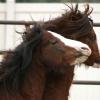
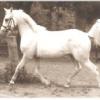
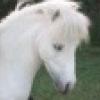
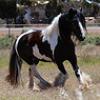


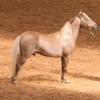

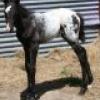
Re: ASD is it linked to silver RM Horses or all silver breeds?
I have only seen the correlation in RMH, but haven't seen anything more recent than about 8 or so months ago. Even in the RMH study, they showed many silvers that had no ASD and some non-silvers that had ASD so it is not a complete link. I will dig up what I can.